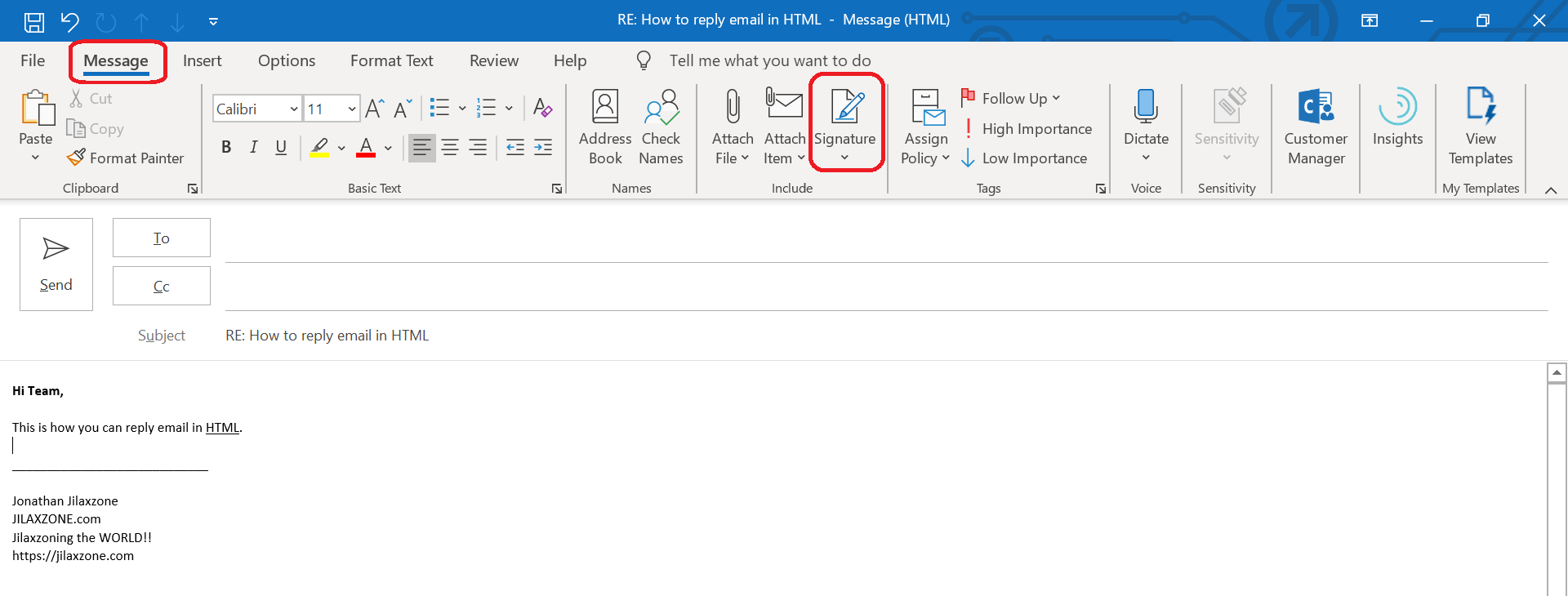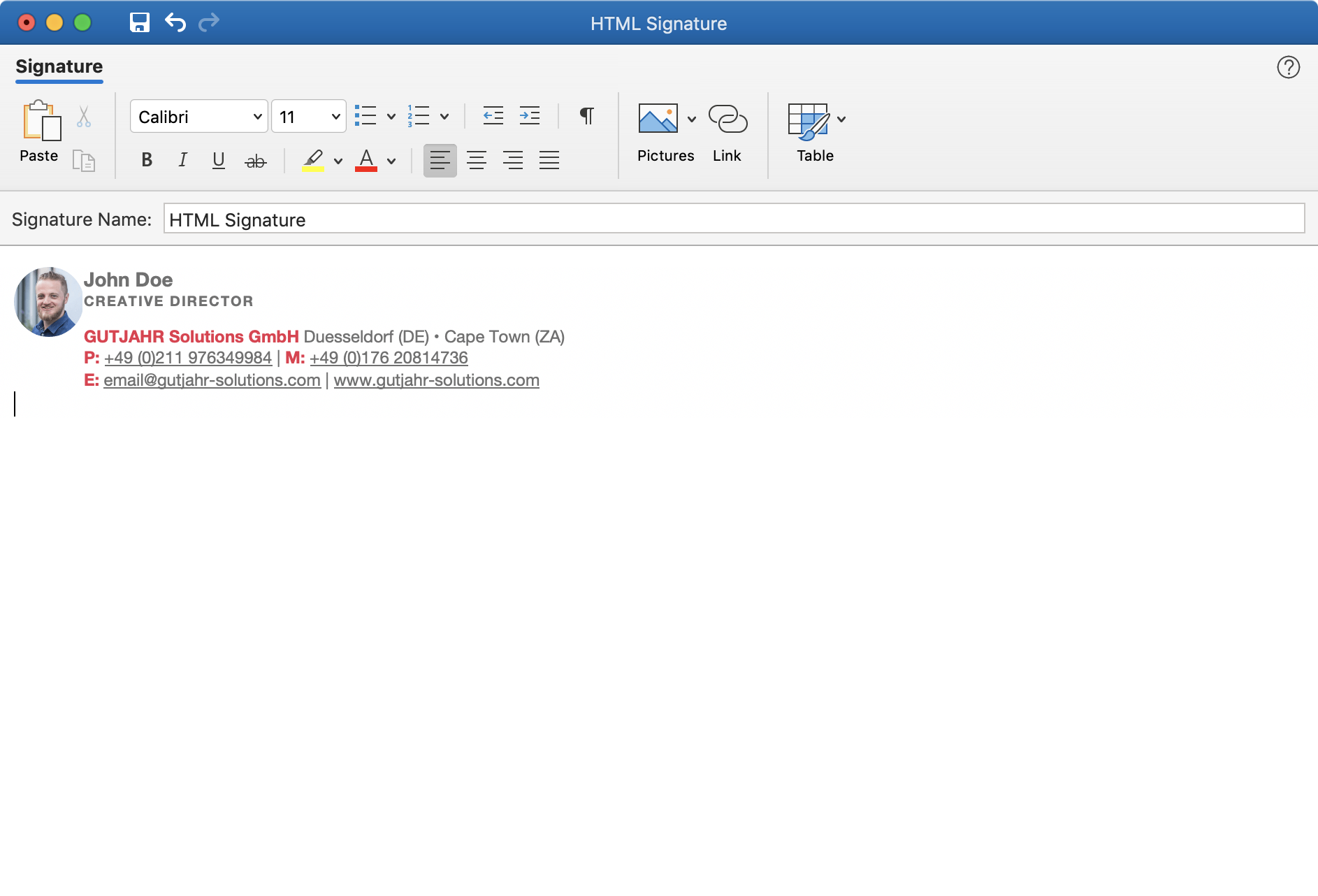
- Outlook 2013 html signature how to#
- Outlook 2013 html signature pro#
- Outlook 2013 html signature trial#
Why is this happening and how can I make my signature work with Outlook 2016? I've successfully used this signature for years with Outlook 2010 and the issue only occurs when I send a message with this signature from Outlook 2016. However, when I send the message, the recipient does not see this picture. This signature contains a picture and looks correct when composing a new message or reply. 'Tis the season to appreciate parents! With Mother's Day and Father's Day falling roughly one month apart in the U.S., I've been thinking about how parenthood has changed my relationship with tech (for better and worse).As proud father of a three-year-old.I've created my HTML signature in an external application and then placed the files (including txt and rtf versions) in the Signatures folder.

Outlook 2013 html signature how to#
Outlook 2013 html signature pro#
Outlook 2013 html signature trial#
There are also external programs for creation and distribution of Outlook signatures, but I'm yet to find any that are free and not just for a trial period.Oh and there's also the whole angle of Outlook blocking viewing external images by default, which is going to cause trouble when printing them, as replies to our messages are received from a wide variety of clients. msg file for use on target computers - but similarly to the previous solution, it adds a whole lot of steps I'd rather try to avoid to keep it simple. html file, import it as text inside a new message in Outlook, and then save that message as a. The convoluted workaround I found for this is to save the Word document with a signature as a. Second, it doesn't work if the signature is copied from Word, as Outlook still creates image files on the "Signatures" folder and uses them when sending messages. First, requires a registry trick, although that could be arranged with a GPO.

But this comes with its own host of problems. Instead of attaching an image to the message, we could link to the image on our website instead.

htm file generated by Outlook can be modified manually, but I'd like to avoid doing that in order to make the process of applying signatures as simple as possible. The newest versions of Office/Outlook seem to have an option to disable image compression in settings, but here we use a wide range of Office versions, from 2013 all the way to 2021.While this allows me to get rid of jpeg compression artefacts, the image file is way too small in resolution to look any good in print. The only way I found to make it stop creating this file, is use a very small image to begin with. Regardless of whether the signature in Word uses a JPG or a PNG image, Outlook always generates a compressed jpeg to use instead. This works alright, except for the fact that it compresses the living bits out of the image, and I'm trying to find a solution for that.Īs soon as the signature is saved in Outlook, inside of "%appdata%\Microsoft\Signatures\" I see two files being created for one image - one an original file, another a compressed copy of it that's actually being used when sending e-mails. Since we don't have that many employees here, and the signature does not change very often, there's no centralised deployment of signatures here - I simply open the Word file with a signature inside on a target machine and copy-paste it to Outlook. It consists of some text, hyperlinks, horizontal line and an image. I have an e-mail signature, which has been prepared in MSO Word 2013.


 0 kommentar(er)
0 kommentar(er)
